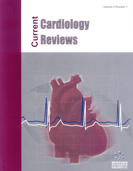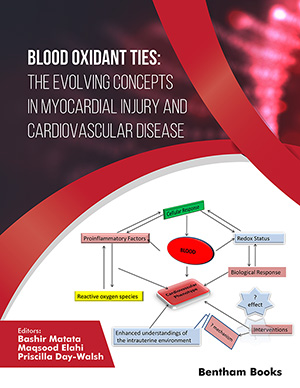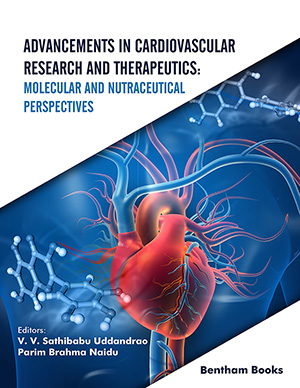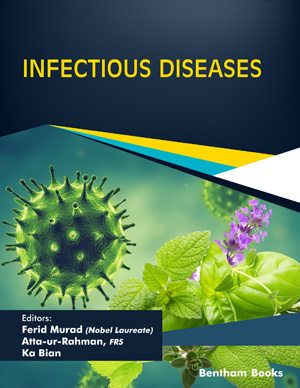Abstract
Lower extremity peripheral artery disease (PAD) affects over 230 million adults globally, with hypertension being one of the major risk factors for the development of PAD. Despite the high prevalence, patients with hypertension who have concomitant PAD are less likely to receive adequate therapy. Through this review, we present the current evidence underlying hypertension management in PAD, guideline-directed therapies, and areas pending further investigation. Multiple studies have shown that both high and relatively lower blood pressure levels are associated with worse health outcomes, including increased morbidity and mortality. Hence, guideline-directed recommendation involves cautious management of hypertensive patients with PAD while ensuring hypotension does not occur. Although any antihypertensive medication can be used to treat these patients, the 2017 American Heart Association/American College of Cardiology (AHA/ACC), 2017 European Society of Cardiology (ESC), and 2022 Canadian guidelines favor the use of angiotensin-converting enzyme inhibitors (ACEI) or angiotensin receptor blockers (ARB) as the initial choice. Importantly, data on blood pressure targets and treatment of hypertension in PAD are limited and largely stem from sub-group studies and post-hoc analysis. Large randomized trials in patients with PAD are required in the future to delineate hypertension management in this complex patient population.
Keywords: Hypertension, peripheral artery disease, systolic blood pressure, diastolic blood pressure, guideline-based management, angiotensin-converting enzyme inhibitor, angiotensin receptor blocker.
[http://dx.doi.org/10.1161/CIRCRESAHA.116.303566 ] [PMID: 25908726]
[http://dx.doi.org/10.1155/2019/8295054 ] [PMID: 32099582]
[http://dx.doi.org/10.1016/S2214-109X(19)30255-4 ] [PMID: 31303293]
[http://dx.doi.org/10.1016/j.jacc.2016.11.008] [PMID: 27851991]
[http://dx.doi.org/10.21037/jtd.2019.12.130] [PMID: 32395311]
[http://dx.doi.org/10.1161/CIRCRESAHA.121.318535 ] [PMID: 34110907]
[http://dx.doi.org/10.1161/CIR.0000000000001005 ] [PMID: 34315230]
[http://dx.doi.org/10.4065/mcp.2010.0133] [PMID: 20592174]
[http://dx.doi.org/10.1016/j.jvs.2009.08.073] [PMID: 20117502]
[http://dx.doi.org/10.2147/VHRM.S125065] [PMID: 29731636]
[http://dx.doi.org/10.1161/01.CIR.0000112642.63927.54 ] [PMID: 14970108]
[http://dx.doi.org/10.1186/s40885-016-0044-y] [PMID: 26929823]
[http://dx.doi.org/10.1161/HYPERTENSIONAHA.109.142240] [PMID: 19996066]
[http://dx.doi.org/10.1177/2047487319865378] [PMID: 31362534]
[http://dx.doi.org/10.1001/jama.2012.13415] [PMID: 23093164]
[http://dx.doi.org/10.1001/jama.295.2.180] [PMID: 16403930]
[http://dx.doi.org/10.1001/archinte.160.19.2934] [PMID: 11041900]
[http://dx.doi.org/10.1111/j.1532-5415.2007.01123.x ] [PMID: 17397438]
[http://dx.doi.org/10.1001/jama.2018.8357] [PMID: 29998344]
[http://dx.doi.org/10.1161/CIR.0000000000000470 ] [PMID: 27840332]
[http://dx.doi.org/10.1177/1358863X14552013] [PMID: 25292418]
[http://dx.doi.org/10.1161/CIRCULATIONAHA.110.003954 ] [PMID: 21690489]
[http://dx.doi.org/10.1177/1358863X19894055] [PMID: 31964311]
[http://dx.doi.org/10.1016/j.jacc.2007.11.077] [PMID: 18420103]
[http://dx.doi.org/10.1161/JAHA.113.000697] [PMID: 24721799]
[http://dx.doi.org/10.1007/s11606-006-5042-4] [PMID: 9127224]
[http://dx.doi.org/10.1093/ehjqcco/qcy035] [PMID: 30020425]
[http://dx.doi.org/10.1371/journal.pone.0178713] [PMID: 28575088]
[http://dx.doi.org/10.1016/j.amjcard.2019.12.026] [PMID: 31959429]
[http://dx.doi.org/10.1093/ehjcvp/pvaa102] [PMID: 32853332]
[http://dx.doi.org/10.1161/CIRCULATIONAHA.118.033348 ] [PMID: 29930023]
[http://dx.doi.org/10.1136/bmj.h4865] [PMID: 26419648]
[http://dx.doi.org/10.3389/fendo.2017.00333] [PMID: 29225591]
[http://dx.doi.org/10.1016/S0140-6736(08)60804-1 ] [PMID: 18561995]
[http://dx.doi.org/10.1161/HYPERTENSIONAHA.112.201400] [PMID: 23006731]
[http://dx.doi.org/10.4061/2011/263585] [PMID: 21845218]
[http://dx.doi.org/10.1161/ATVBAHA.120.315482 ] [PMID: 33853351]
[http://dx.doi.org/10.1093/eurheartj/ehx095] [PMID: 28886620]
[http://dx.doi.org/10.1093/ehjcvp/pvaa093] [PMID: 32722801]
[http://dx.doi.org/10.1161/CIRCULATIONAHA.118.036409 ] [PMID: 30354668]
[http://dx.doi.org/10.1007/s40265-022-01755-7] [PMID: 35960432]
[http://dx.doi.org/10.1161/ATVBAHA.119.312142 ] [PMID: 31996023]
[PMID: 29133356]
[http://dx.doi.org/10.5551/jat.53660] [PMID: 32624554]
(b) Schizas CDG, Pargaonkar D, Karamanis S, et al. Differences between lower extremity arterial occlusion vs. stenosis and predictors of successful endovascular interventions. Medicina 2023; 59(11): 2029.;
(c) Ahmad Naser IS, Akunor H, Fatuyi M, et al. Short term outcomes of endovascular and surgical therapies for critical limb ischemia: a nationwide analysis. Circulation 2023; 148: 16822.
[http://dx.doi.org/10.1161/01.HYP.35.3.844 ] [PMID: 10720605]
[http://dx.doi.org/10.1016/S0735-1097(01)01827-7 ] [PMID: 11869856]
[http://dx.doi.org/10.1016/j.cjca.2020.02.086 ] [PMID: 32389335]
[http://dx.doi.org/10.1056/NEJM200101043440101 ] [PMID: 11136953]
[http://dx.doi.org/10.1136/bmj.39147.604896.55] [PMID: 17449506]
[http://dx.doi.org/10.1002/bjs.9207] [PMID: 23842830]
[http://dx.doi.org/10.1161/CIRCULATIONAHA.111.075770 ] [PMID: 22090168]
[http://dx.doi.org/10.1016/j.jacc.2014.12.043] [PMID: 25766947]
[http://dx.doi.org/10.1016/j.jacc.2005.09.074] [PMID: 16545650]
[http://dx.doi.org/10.3317/jraas.2000.002] [PMID: 11967789]
[http://dx.doi.org/10.1056/NEJMoa0801317] [PMID: 18378520]
[http://dx.doi.org/10.1001/jama.288.23.2981] [PMID: 12479763]
[http://dx.doi.org/10.1016/j.ejvs.2008.01.007] [PMID: 18375152]
[http://dx.doi.org/10.1136/heartjnl-2019-316164] [PMID: 33985986]
[http://dx.doi.org/10.1093/eurheartj/eht151] [PMID: 23771844]
[http://dx.doi.org/10.1016/j.ehj.2003.10.033] [PMID: 14683738]
[http://dx.doi.org/10.1056/NEJMoa2028220] [PMID: 33186492]
[http://dx.doi.org/10.1016/j.cjca.2022.02.029] [PMID: 35537813]
[http://dx.doi.org/10.1177/1358863X15574321] [PMID: 25835349]
[http://dx.doi.org/10.1161/HYPERTENSIONAHA.120.14647] [PMID: 32951472]
[http://dx.doi.org/10.1161/CIRCULATIONAHA.121.054602 ] [PMID: 35950927]
[http://dx.doi.org/10.1097/HJH.0b013e328310e0d9 ] [PMID: 18854748]
[http://dx.doi.org/10.1007/s11606-014-2947-1] [PMID: 25002161]
[PMID: 12572707]
[http://dx.doi.org/10.1097/01.hjh.0000249692.96488.46] [PMID: 17053536]
[http://dx.doi.org/10.1002/14651858.CD003075.pub3 ] [PMID: 24307487]
[http://dx.doi.org/10.1001/archinte.1991.00400090063012 ] [PMID: 1679624]
[http://dx.doi.org/10.1161/HYPERTENSIONAHA.110.169169] [PMID: 21646599]
[http://dx.doi.org/10.1097/MD.0000000000005916 ] [PMID: 28151868]
[http://dx.doi.org/10.1097/HJH.0b013e3283471151 ] [PMID: 21602713]
[http://dx.doi.org/10.1016/j.ejvs.2009.02.019] [PMID: 19359199]
[http://dx.doi.org/10.5551/jat.27359] [PMID: 25445890]
[http://dx.doi.org/10.1001/archinte.164.4.440] [PMID: 14980996]
[http://dx.doi.org/10.1016/j.jvs.2020.02.041 ] [PMID: 32276021]





















